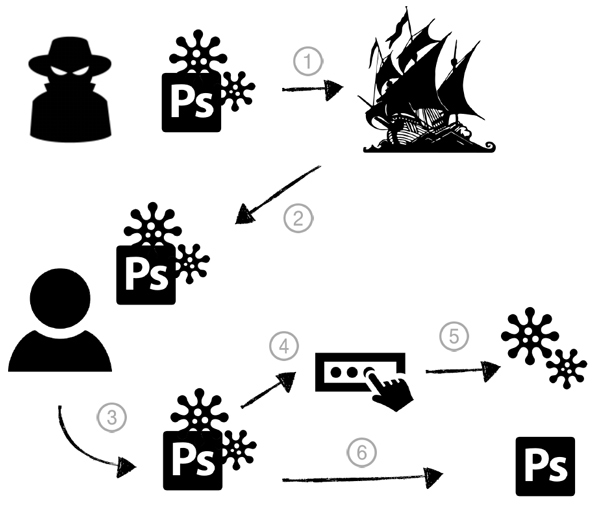Malware spreads through infected torrent, then maintains persistence on the system.
A month ago, security firm
Dr.Web
reported
it had discovered a new malware variant targeting
Mac OS X
, that was subsequently dubbed ‘iWorm’.
Apart from the fact that malware for
OS X
, though becoming more common, is still a bit of a novelty, most reports focused on iWorm’s unique way of obtaining a list of command and control servers: the malware performed a search on
Reddit
for a particular string, which was used by the owners of the botnet to post C&C addresses and ports.
Today, we publish a paper by Patrick Wardle, Director of Research at
Synack
, in which he performs a tactical study of iWorm, focusing on both the infection vector and the way the malware maintains persistence on an infected system.
Despite its name, iWorm is a backdoor and not a worm, and thus didn’t spread automatically. Patrick explains how torrents of pirated versions of
Adobe Photoshop
and
Microsoft Office
were spread – which, apart from the promised program, also installed iWorm on the side.

Once installed, the malware is executed automatically by the operating system every time the computer is restarted. There are many persistence methods on
OS X
, and iWorm uses a relatively simple method, by installing as a launch daemon.
Thankfully, removing the malware is rather trivial and requires the execution of just three simple commands.

You can read the paper
here
in HTML format or
here
as a PDF. As always, papers published by
Virus Bulletin
are available free of charge and do not require registration.
If you are interested in the subject of persistence methods of
OS X
malware, you should read Patrick’s VB2014 paper on the subject “Methods of malware persistence on Mac OS X”, which we published
this week
. In it, he describes various persistence methods and also presents the
KnockKnock
tool, which one can use to find programs persistently installed on
OS X
.
Posted on 30 October 2014 by
Martijn Grooten
Leave a Reply